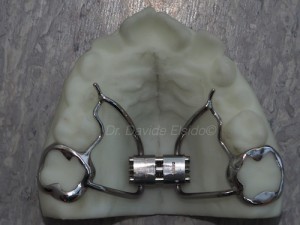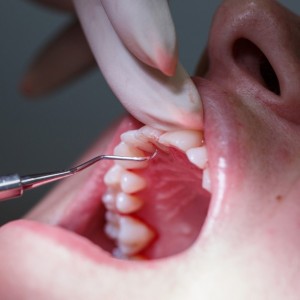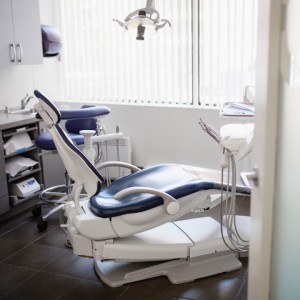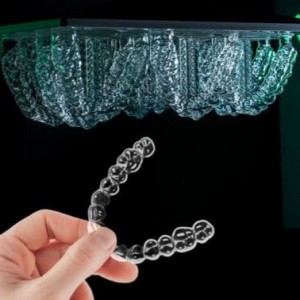
Nasal ventilation and rapid maxillary expansion
Davide Elsido
Rapid maxillary expansion (RME) appliances are often used to treat transverse deficiencies in the maxilla since their introduction in the 1860s with both skeletal and dentoalvoelar effects.
Rapid maxillary expansion is also being advocated as an effective means to alleviate nasal airway obstruction by improving airflow ventilation parameters. RME, with or without additional surgical assistance, could potentially lead to transition from mouth to nasal breathing, promote favourable pharyngeal adaptations and subsequently reduce negative pressure, improve head and tongue posture, and serve as adjunctive procedure in obstructive sleep apnoea (OSA) patients with concomitant transversally constricted maxilla and posterior dental crossbites.
The impact of orthodontic treatment on the airways has received increased interest in the latter years with studies showing that, in addition to its orthodontic effects, RME can have a positive effect on airway dimensions and breathing function. The mechanism of action is believed to derive from the increases of nasal width with subsequent enlargement in upper airway volume and decrease in nasal resistance . A significant increase in nasal airflow and reduction in airway resistance was found with Hybrid-Hyrax expanders using rhinomanometry immediately after expansion. These beneficial effects of RME have been highlighted as a therapeutic possibility in children diagnosed with obstructive sleep apnoea, who showed a reduction in the Apnoea–Hypopnea Index (AHI) after RME treatment.
The upper airway has been traditionally measured using 2D imaging (lateral cephalometric radiographs); however, there are considerable limitations of measuring a 3D volume from a 2D image. Advances in 3D imaging (magnetic resonance imaging, computed tomography, and cone beam computed tomography [CBCT]) have allowed better visualization and reliable analysis of the airway volumes.
Various types of RME appliances exist with a different design. Conventional tooth-anchored expanders increase intermolar and nasal width, nasal volume, and minimal cross-sectional area (min-CSA) in similar ways. Hybrid expanders anchored on both teeth and temporary anchorage devices were introduced to enhance the skeletal effects of RME and reduce the load to anchor teeth by delivering the expansion forces closer to the center of resistance of the nasomaxillary complex via palatal mini-implants. Short-term rhinomanometric comparisons, before and immediately after expansion, of tooth-anchored versus hybrid expanders, showed higher nasal airflow values and greater reduction of nasal airflow resistance for hybrid designs. RME induces stable increases in nasal cavity volume; however, either purely bone-anchored or hybrid expanders seem to outperform conventional tooth-anchored devices in sutural opening, minimization of dental side-effects, and improved nasal airway resistance.
The aim of a trial published in a recent issue of the European journal of Orthodontist was to assess changes in nasal ventilation parameters induced by RME with conventional tooth-borne (Hyrax), tooth-bone-borne (Hybrid-Hyrax), and the Keles keyless expander using CBCT data and CFD.
Fifty-four patients were analyse. RME was discovered to reduce both nasal pressure and velocity accompanied with nasal obstruction resolution. Regressions accounting for baseline severity indicated HH expander performing better in terms of post-expansion maximum velocity (P = 0.03) and nasal obstruction resolution (P = 0.04), which was robust to confounders. Mucosal/adenoid hypertrophy and nasal septum deviation changes were variable, minimal, and similar across groups. The HH resulted in significantly greater increase in the nasal cross-sectional area (62.3%), anterior (14.6%), and posterior (10.5%) nasal widths. Nasal obstruction resolution was more probable among younger (P = 0.04), skeletally immature (P = 0.03), and male patients (P = 0.02) without pre-treatment mucosal hypertrophy (P = 0.04), while HH was associated with marginal greater probability for obstruction resolution.
As Conclusions, RME resulted in improvement of nasal skeletal parameters and simulated ventilation with the former being in favor of the HH and the latter not showing significant differences among the three appliances.
For additional information: Nasal ventilation and rapid maxillary expansion (RME): a randomized trial.
 Related articles
Related articles
Orthodontics 04 July 2022
Otitis media and rapid maxillary expansionOtitis media with effusion (OME) is defined as the presence of fluid in the middle ear without signs or symptoms of acute ear infection. OME is responsible...
In the latest issue (May 2020) of The Angle Orthodontist a systematic review was published about the effects of Rapid Maxillary Expansion (RME) on ...
 Read more
Read more
Periodontology 30 October 2025
To update the competences and learning outcomes and their evaluation, educational methods and education quality assurance for the training of contemporary specialists in periodontology
Editorials 30 October 2025
New research explores the prevalence of dental fear and memories underlying it, underscoring the need for accessible treatment.
Products 30 October 2025
LuxCreo, a global innovator in personalized medical and dental devices, announced that it has received a strategic investment from Angelalign Technology Inc., a leading.
News 30 October 2025
GTCR, a leading private equity firm, announced the simultaneous signing and closing of a strategic, structured minority investment in Solmetex (the “company”).
News 30 October 2025
PDS Health, a leading integrated healthcare support organization, has announced the launch of PDS Health Medical, a new business unit that connects medical care to dental practices through connected...


.png)









